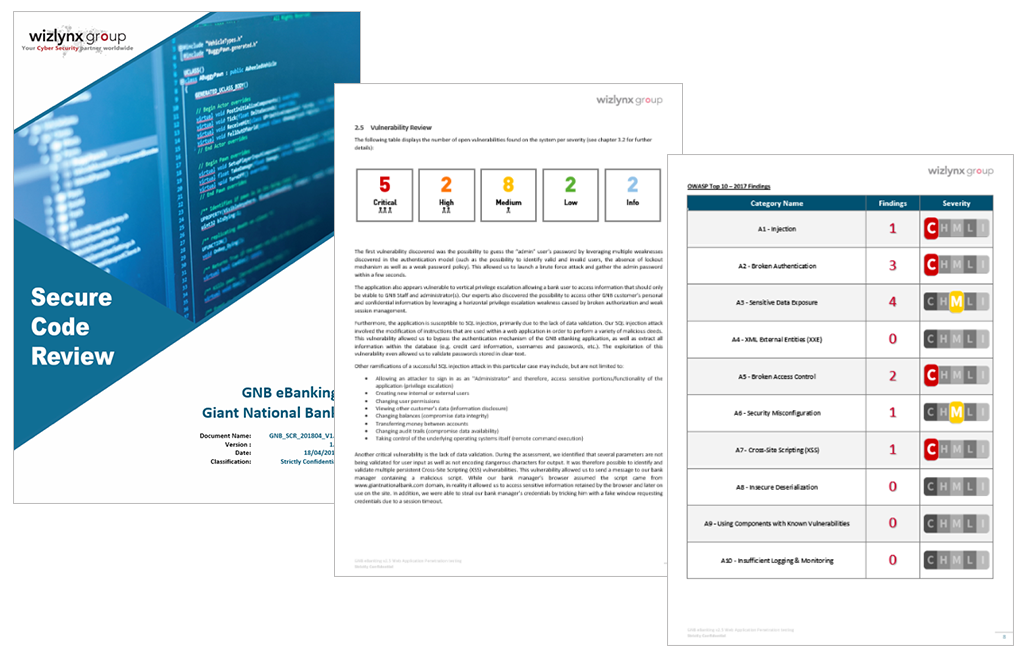Security Services
Web applications are a core component for almost all companies. They are used for various reasons, and very often, capture, handle, store and transmit sensitive data (confidential business information, HR data, financial information, etc.).
The high value of the data accessed via web applications increases their value as a target, thus making regular assessments is highly recommended.
Our team uses a hybrid methodology, composed of automated and manual testing, to assess the source code of your Java, PHP, and .NET web applications to identify vulnerabilities before cybercriminals do.
Our services rely on highly skilled cyber security analysts and pen-testers with extensive experience, both in defense and offense.
Our Secure Code Reviews can be complemented by a web application penetration test for an in-depth vulnerability detection.
All findings will be documented in a final report, and then compared with a strengths/weaknesses profile against international standards for IT & Cyber Security. The identified weaknesses will be assessed and supplemented with recommendations and remediation actions, as well as prioritized according to the risk associated. The final report will be discussed during a presentation with you. The report will include a comprehensive and meaningful C-level summary of the executed security audit or penetration test. Additionally, it will include all detailed results with respective evidence and recommendations for future security measures.

wizlynx's security consultants and penetration testers hold the most recognised certifications in cyber security and penetration testing industry such as: SANS/GIAC GPEN, GWAPT, GCIH, GMOB, OSCP, CEH, CISSP, CISA and more!






